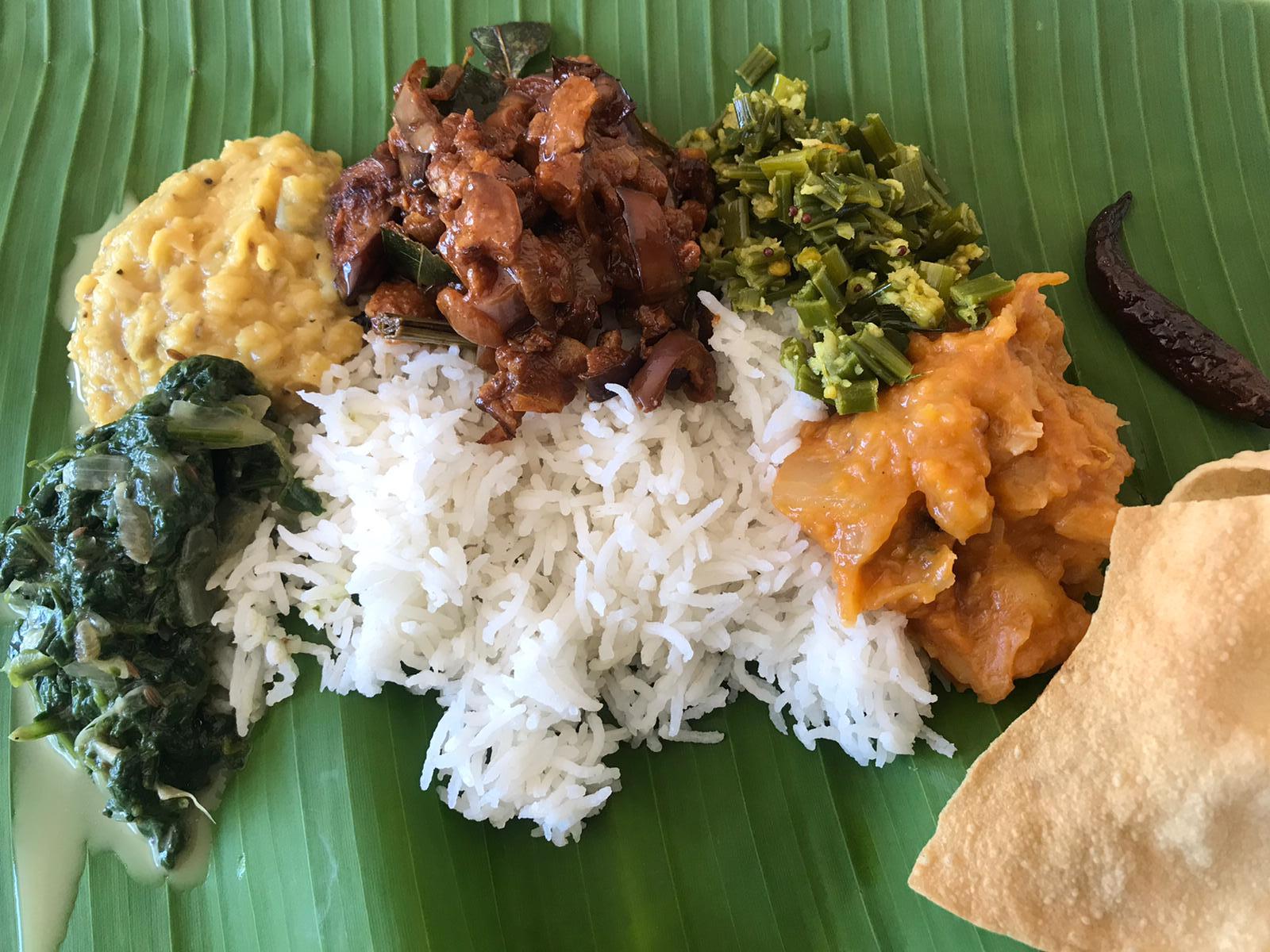(Photo: Aadi Amavaasai rituals at the Batticaloa Manmangeswarar Pillaiyar Kovil)
The new moon in Aadi (July) is one of the three most powerful new moons of the year. Devotees honour their ancestors by observing fasts, feeding crows and bathing in large bodies of natural water to rid themselves of their sins.
Fasts are observed throughout the day, in which the crows are fed first, before the fast is broken in the evening. Crows are believed to be superior creatures that live together and eat together. Ancient texts guide that one can receive the blessings of the ancestors by feeding such a “high living crow". Hence, it is common to feed the crows on the day of the new moon.

(Aadi Amavaasai meal served on a banana leaf - London)
Some Tamil scholars believe Aadi Amavaasai traditions to be an assimilation of Vedic ritual into the ancient Tamil practice of ancestor worship.
Astrologically, the Sun and the Moon fall under the Moon’s home sign of Cancer. This is said to alleviate the passageway for the passing of ancestors.
Ancient Hindu texts stated that they can depart the “underworld” to see and offer their blessings to their living descendants. With that belief, offerings called ‘tharpanam’ of fruits and flowers are given to ancestors on the new moon of Aadi to show their love and appreciation. Some may even prefer to prepare favourite dishes of their forefathers to recall them on the day.
In mainstream Eelam Tamil culture, Aadi Amavaasai is particularly observed by those with deceased fathers. A parallel fast is observed during the April full moon – Chithrai Pournami – for female ancestors. While the fast was observed across the Tamil homeland as well as all around the world by Tamils in the diaspora, gatherings at temples - particularly waterside temples - were muted due to the current situation with the Coronavirus pandemic.
